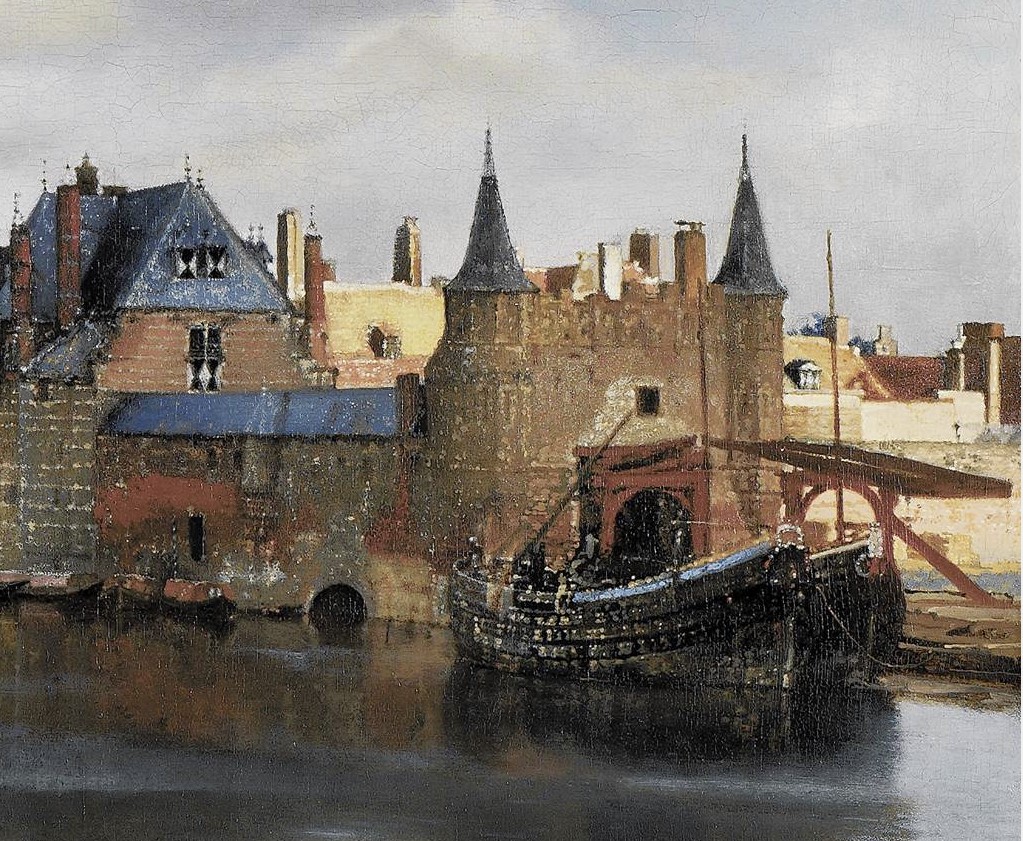Vermeer, View of Delft and Woman with a Balance
One of the most intriguing Dutch artists is Johannes Vermeer (1632-1675), who was also an innkeeper and art dealer. He entered the Delft artist’s guild in 1653 and painted only for local patrons. Meticulous in his technique, with a unique compositional approach and painting style, Vermeer produced fewer than 40 canvases that can be securely attributed to him, and the more these paintings are studied, the more questions arise about the artist’s life and his methods. Vermeer’s View of Delft, for example, is no simple cityscape.


Although the artist convinces the viewer of its authenticity, he does not paint a photographic reproduction of the scene. Vermeer moves buildings around to create an ideal composition. He endows the city with a timeless stability by a stress on horizontal lines, the careful placement of buildings, the quiet atmosphere, and the clear, even light that seems to emerge from beneath low-lying clouds. Vermeer may have experimented with a mechanical device known as the camera obscura, not as a method of reproducing the image but as another tool in the visual analysis of the composition.
The camera obscura would have enhanced optical distortions that led to the “beading” of highlights (seen here on the harbored ships and dark gray architecture), which creates the illusion of brilliant light but does not dissolve the underlying form.

Most of Vermeer’s paintings portray enigmatic scenes of women in their homes, alone or with a servant, occupied with some cultivated activity, such as writing, reading letters, or playing a musical instrument. These are quiet interior scenes, low-key in color, asymmetrical but strongly geometric in organization. By creating a contained and consistent architectonic world in which each object adds to the clarity and balance of the composition, Vermeer transports everyday scenes to a level of unearthly perfection. An even, pearly light from a window often gives solidity to the figures and objects in a room. All emotion is subdued as Vermeer evokes a mood of quiet meditation. The brushwork is so controlled that it becomes invisible, except when he paints his characteristic pools of reflected light as tiny, pearl-like droplets of color.
In Woman Holding a Balance, perfect equilibrium creates a monumental composition and a moment of supreme stillness. The woman contemplates the balance in her right hand, drawing our attention to the act of weighing and judging. Her hand and the scale are central, but directly behind her head, on the wall of the room, is a painting of the Last Judgment, highlighting the figure of Christ the Judge in a gold aureole above her head. The juxtaposition seems to turn Vermeer’s genre scene into a metaphor for eternal judgment, a sobering religious reference that may reflect the artist’s own position as a Catholic living in a Protestant country. The woman’s moment of quiet introspection in front of the gold and pearls displayed on the table before her, shimmering with reflected light from the window, also evokes the vanitas theme of the transience of earthly life, allowing the painter to comment on the ephemeral quality of material things.[1]

- Marilyn Stokstad, Art History, vol. 2, 4th ed, (Upper Saddle River, NJ: Prentice Hall: 2011),749-75. ↵

